How to Choose the Best Travel Bag For Your Next Trip
A lot of travelers despise packing, but I love it. I think of it as a puzzle – a fun challenge, and I set 3 specific goals for myself when thinking about an upcoming trip.
1) Bring only what you need.
2) Make sure whatever you do bring, you use (at least once).
3) Everything has to fit into two bags that you can walk with for at least a mile.
These are my goals that fit the kind of travel Michelle and I like to do. This is the most important consideration when deciding what bag(s) to use for your next trip: “How do I like to travel and what works best for me?”
Disclosure: This free article contains affiliate links. If you make a purchase after clicking one of these links, we may earn a small commission at no additional cost to you. As an Amazon Associate, we earn from qualifying purchases. Your support helps us continue to provide helpful, free content for you.
Table of Contents
How to choose the best travel luggage for your trip
Maybe you’re the kind of traveler that likes to have a lot of options, doesn’t like to do laundry on the road, and takes ride shares wherever you go. You might be more inclined to use traditional check-in luggage.
Maybe you’re a minimalist backpacker who is using a lot of budget airlines that charge extra for checked-in bags and can fit everything you need into a carry-on. You might be more interested in a backpackers bag.
What we’ve found in our travels is that each trip is different. By thinking strategically, choosing the right bag(s) for your trip can enhance the overall experience.
First, let’s break up the type of luggage and bags available into 3 categories:
1. Check in bags: anything that’s not allowed in the cabin of a plane due to size and weight restrictions
2. Carry on bags: any bag that meets the size and weight restrictions of the airplane cabin. This includes…
3. Everyday packs and bags: something you can bring on the plane in addition to your carry on. Laptop bags, backpacks, purses, slings, clutches, etc…
The main difference in these categories is the size, which affects packing capacity. Obviously the bigger the bag, the more things you can theoretically bring (and also bring back, if you like to buy things on your trips).
When deciding on the size of the bag needed, we like to think of the following things:
How many different kinds of weather situations will we encounter on our trip? Weather changes are the hardest thing to pack for. When we went from Vietnam to New Zealand, we went from 85 F degree weather to 32 F degree weather. We made sure to have both warm and cold weather clothing with us, meaning: we needed a bigger bag.
How often will you be in transit? More specifically, how much walking will you be doing? We are not backpackers, but we’ve found our check-in backpacks to be helpful in places like Europe and Asia where there might be a lot of public transit and walking (and uneven surfaces along the way).
Backpacks also help us to limit the items we bring because there’s only so much you can carry on your back. On the flip side, if we’re traveling and then staying in one place for awhile, we might bring our bigger, roller duffle bag which allows us to carry more items. This works best when we know there will be adequate transportation to and from the airport to our lodging.
Should I check-in bags when flying or not? Bag size also affects what can and can’t be brought in an airplane cabin, which is relevant to baggage fees. Unfortunately, every airline has its own baggage policy so make sure to check on these things when booking flights. This is especially important when flying budget airlines that charge a fee AND have weight restrictions for each bag.
If you’re traveling overseas, hopefully checked bags are included in your ticket. But say you’re going to Vietnam and then to Thailand, Cambodia, and then returning to the US. You’ll want to see how much it will cost to check in your bags when going from country to country. Some of our well-traveled friends are minimalists and devoted carry-on-only travelers. This group amazes me because they can go for months/years with this setup. I’m not convinced this would work for us but I can see why it appeals to some folks. Their bag never gets lost. They rarely, if ever, pay for baggage fees. And most importantly, it helps support their minimalist lifestyle.
They say (and I believe it), the best way to not overpack is to use a smaller bag.
For most of the travel we do, Michelle and I use a combination of one check-in bag and one everyday bag, per person. With this combination, we feel more than adequate for trips that are 2 weeks, up to 3 months long.
Here are some combinations we’re planning to use for our next trips:
A 2-week trip to visit family in San Diego: We’re flying Southwest so we’ll either check in one large rolling bag to share, or 2 smaller rolling bags (because it’s free), and carry our everyday laptop backpacks. We won’t be moving around a lot and are hoping to be using a car to get to and from the airport.
A 2.5 month Europe trip to Italy and Croatia: This trip will be tricky to pack for, as we’ll have multiple things to consider. The weather will start warm and get colder. This means we’ll need to bring different types of clothing. We’ll be doing some walking to and from accommodations and taking a road trip, so we don’t want to bring too big of a bag. However, I’m also planning to do a fair amount of cooking so I want to be able to pack some cooking supplies with me. Most likely Michelle will use her check-in backpack and I’ll check our roller duffle. We’ll also both carry our everyday packs.
Here are some of our favorite recommendations for check in suitcases/luggage, carry on bags, and everyday packs:
The Best Check In Bags
Our Osprey Farpoint 55 Travel Packs. Note that we exchanged the smaller detachable bags with one another for color contrast (easier to spot at baggage claim). They don’t sell it this way.
Travel Backpacks for Europe and Overseas Trips
When people think of large backpacks for travel, they often think of hiking backpackers who have to carry all their gear for overnight treks.
What makes travel packs different from those of their hiking counterparts is that travel backpacks have larger main compartments and fewer technical features. Travel packs are made for versatility. You can use them as backpacks or hide the straps for better transportation (less chance for getting snagged on something). They are also more affordable then hiking backpacks.
Why a backpack in general? We’ve personally found them the easiest to travel with for almost all situations. In places like Asia and Europe, many of the Airbnbs we’ve stayed at do not have elevators. Carrying bags on your back is far easier than trying to lug it up by hand. We also like to walk and use public transportation when possible. Rolling bags over cobblestone isn’t much fun and again, stairs! So many places have stairs. Versatility and adaptability is important to us which is why Travel Packs are our preferred, go-to bags for most trips.
Osprey Farpoint 55L Travel Pack: Men’s (click here) and Women’s (click here)
Our favorite travel bags. In addition to having all of the features mentioned above for a travel pack, these are actually two travel bags in one! You can unzip the top portion away from the main bag to give yourself an extra daypack. We love the daypack for hiking or for exploring cities on foot. It’s the perfect size for these kinds of experiences. Then, when we are in transit to another area, we can zip up the smaller pack back onto the bigger pack. Who doesn’t love a 2 for 1 deal?! See our full review and video of the Osprey backpack here.
Note: the only main difference between the men’s and women’s packs are the bag height and strap size. We both have the women’s packs as it fits us the best.
Learn more about the Osprey 55 men’s backpack on REI.com
Learn more about the Osprey 55 women’s backpack on REI.com
REI Co-op Ruckpack Travel Pack: Men’s (click here) and Women’s (click here)
Similar to the Osprey with its two-bags-in-one offering. We’re not a huge fan of all the extra straps and non-streamlined look, but that’s nitpicking and personal preference. This is still a great travel pack. Similar to the Osprey option, the men and women sizes vary slightly, but the main difference here is the color.
Learn more about the men’s REI Co-op Ruckpack
Learn more about the women’s REI Co-op Ruckpack
P.S. We highly suggest packing cubes for all your clothing and gear, whatever bag you use. Packing cubes are the best way to consolidate and organize your items. The best way to use a cube is to roll your clothing tightly and fit them tightly into each cube. (Click here to learn more about travel packing cubes)
Our roller duffel and non-wheeled duffel bags
Roller Duffel Bags
We love our rolling duffel bag that we got for our service in the Peace Corps. This REI bag has been with us over 7 years and we’ve had no issues with it (and it’s been everywhere). What’s great about a duffel bag is that it can expand or compact to fit what’s needed.
Our duffel bag also comes with a set of rugged wheels which roll smoothly through airports and can handle the cobblestone streets of Europe better than most. It doesn’t have a hard shell frame, so you do have to be careful if you’re packing any fragile items (like wine or olive oil bottles – yes, we’ve done both in this bag).
REI Co-op Big Haul Rolling Duffel – 30″
The updated version of our roller duffle bag. Remember, we’ve had ours for more than 7 years which means it’s a great investment and value. Durability and quality are important and we’ve been impressed with REI’s own products. Pro tip: we highly suggest the 30″ over the available 34″. Why? Don’t forget that all airlines have weight restrictions. Bigger bags only mean you can carry more. It doesn’t help with trying to make weight restrictions. In other words, it’s not worth paying for something extra that could be detrimental.
Learn more about the REI Co-Op Big Haul Rolling Duffel here
Eagle Creek Orv Trunk Wheeled Duffel – 30″
Similar size to the REI version but with more pockets and features. It also includes a lifetime warranty which is a great benefit. It means your investment is protected. There might be some sticker shock here, but again, this is a bag that could be with you for a long time and lots of adventures. That’s awesome!
Learn more about the Eagle Creek Orv Trunk Wheeled Duffel here
Duffel Bags
If you’re looking for a more inexpensive version, consider a regular duffel bag without wheels. We sometimes will bring a rolled-up duffel bag with us when we travel to Vietnam because we know we’ll want to take a lot of gifts and packaged food home with us. We can pack the duffle compactly inside another suitcase until we get to our destination.
Obviously, the thing to consider here is that without the convenience of wheels, a duffle bag may not be great to carry over long distances. These are really more accessory bags and shouldn’t be your go-to bag for most trips.
REI Co-op Big Haul 60 Duffel
Most duffel bags are just one large main compartment. This bag has several compartments and extra backpack straps. You can also roll it up, making it extremely packable and versatile.
Learn more about the REI Big Haul Duffle here
REI Co-op Roadtripper Duffel – 100L
Your classic duffel. No frills, not a lot of features but still great for hauling stuff. Best for souvenirs and other extra items you need to carry.
Learn more about the REI Roadtripper Duffel here
Traditional Luggage
Though we typically use a Travel Pack or Duffle, there are times when we take a trip and use good ol’ fashioned luggage. The structure and frame can help protect fragile items you might be carrying, and they usually offer the best carrying capacity in relation to overall weight.
Also, whoever invented the four-wheel system is a genius, as it makes moving them through an airport so nice and easy. Note: we suggest hardshell cases over soft fabric suitcases. The hard shells are more durable and weather-resistant.
Chester Hardshell Luggage with Spinner Wheels
We have the 26″ carry-on size (pictured below). Chester luggage is sleek, light-weight, and super durable. Valuable features include well-organized interior compartments, removable laundry bag, and TSA-approved locks. Multi-directional wheels and telescoping handle make maneuvering smooth and effortless.
Disclosure: Chester provided us a complimentary bag to test. All opinions and comments are our own.
Learn more about Chester Travel Luggage carry-on version here
AmazonBasics Hardside Spinner Luggage – 28-Inch
Similar to the Chester but with different interior compartments and fewer extra features. Also cheaper.
Learn more about AmazonBasics Hardside Spinner Luggage here
(Check out the carry-on version here)
Save money, work smarter, travel deeper with
our free Resource Guide for Digital Nomads.
The Best Carry On Bags
Minimalist Travel Backpacks
Sometimes I dream about hanging out in this category of bags. I love the idea of having everything you need in one manageable pack (it would have helped in Lisbon) but we’re not quite there. Meanwhile, some of our nomad friends avoid checking in bags like the plague.
But this type of traveling requires some special planning. For example, it seems like every device we own has its own charger and cord. Our minimalist traveler friend has only bought electronics that can be charged from his laptop. Even his toothbrush and electric razor. It also means having a ‘capsule wardrobe’ that works in a variety of situations and climates. Clearly, access to laundry becomes very important.
Finally, starting with a smaller bag is a good way to help you pack only the items that you really need. A smaller bag means it’s easier to carry. You don’t have to worry about it getting lost by airlines, and you won’t bring home unnecessary souvenirs (because they won’t fit).
Here are some of our favorite minimalist travel backpacks:
Cotopaxi Allpa 35L Travel Pack
Fun. Colorful. But most of all, functional and practical. Cotopaxi makes some awesome bags and has a great mission.
Check out the Cotopaxi Allpa travel pack here
Timbuk2 Wander Pack
Streamlined, no-frills look and design. Timbuk2 makes very durable products and recently, their bags have become and important market to them.
Check out the Timbuk2 Wander Pack here
Our everyday backpacks. The Errant Pack (left, Jedd) and the Reed Pack (right, Michelle)
Everyday Backpacks and Laptop Bags
Of all the bag categories, this is my favorite. If there’s one bag Michelle and I use on a daily basis, it’s our laptop backpacks.
These everyday bags are smaller than the carry-on bags and travel packs we’ve mentioned so far. They are big enough for a short weekend trip. Most importantly, they are small enough to count as a personal item on a plane – something you can carry in addition to a carry on bag. This means they can easily fit underneath the seat in front of you.
These bags are not meant to store a large amount of gear and should be comfortable to walk with for long periods of time. They should have plenty of storage for your laptop, cords, and other gear (like a water bottle). Often we use these bags to take with us to coffee shops or coworking places.
These are not necessarily the kind of bags you’d want to use for a long city excursion or hiking (though it’s possible if you weren’t carrying around heavy things like your laptop).
If something happened to my check-in luggage, I wouldn’t mind so much. But I’d be heartbroken if something happened to my everyday backpack. It usually has the most important items.
Here are the bags we personally use for our everyday backpacks:
Michelle: Clark and Mayfield’s Reed Backpack 17″
Michelle is a huge fan of Clark and Mayfield bags in general. Each bag has tons of storage and thoughtful pockets. Ever since they launched their new backpack, it’s been her go-to, everyday bag. She’s also used a number of their laptop handbags for travel over the years.
Jedd: Boundary Supply’s Errant Pack
I spent a lot of time researching which bag I wanted. I wanted something that could hold my laptop against my back (for support), have a decent main compartment for storage, and selfishly, I wanted it to also look great. The Errant Pack more than delivers on all levels.
Check out Boundary Supply’s Errant Pack here
Day Packs for Travelers
Is this category necessary? How is it different than an everyday pack that we just talked about?
I’ve found that when we travel overseas, two things we love to do is explore a town/city on foot and go hiking. In these scenarios, we can be out for over 6 hours, which means our everyday packs are probably too big. We only want the essential items – namely, our water bottle, camera, and snacks (don’t forget the snacks).
As we mentioned before, our bigger (and highly recommended) travel pack, the Osprey Farpoint, comes with its own daypack that we love. We’ve used it on so many walks and hikes that we often bring the travel pack on our trips because of this bag alone.
If you don’t have a day pack or sling, seriously consider getting one. It isn’t necessary for everyone, but we’ve found a lightweight day pack extremely helpful for us to keep a wide range of bags available for different travel scenarios. Usually they’re small enough to pack unobtrusively in your luggage until you arrive at your destination.
Here are some day packs and slings that we recommend:
Osprey Daylite Travel Pack
This is the same size bag that comes with our Osprey Farpoint Travel Pack. Again, it’s so versatile. For a while I was using this as my everyday backpack, but it ended up being just a tad bit too small for that purpose. It’s still perfect for hiking or day excursions to explore towns and cities.
Check out the Osprey Daylite backpack here
REI Co-op Ruckpack 18 Pack
Very similar to the Osprey pack with a different design. It’s got great reviews and reliability. If I didn’t have an Osprey Daylite, I’d easily go with this pack.
Check out the REI Ruckpack 18 here
Final Tips and Thoughts
We hope that this guide is helpful but we also recognize that what works well for us may not for you. The most important thing to consider when purchasing a bag or luggage is your own travel preference:
- What kind of travel do you enjoy and plan to do?
- How many things do you need when you travel?
- What are your budget considerations (for purchasing a bag, baggage fees, etc…)?
Some tips when making a travel bag purchase:
- Read online reviews, especially the most critical/helpful ones. There’s also a fair amount of folks that review bags online (check out Chase Reeves on YouTube). You can read our detailed review of our favorite travel bag, the Osprey Farpoint here.
- Check to see if the manufacturer has a great warranty. Bags can be expensive and they will go through a lot of tough situations (have you ever seen an airlines crew loading bags?). Damage is expected. It’s nice to know that some companies will repair damaged bags with no question. We also love that with REI allows returns within the first year of your purchase if you’re not satisfied with it. See your travel bag as an investment.
Last but not least… don’t forget the value of travel packing cubes. They are a game-changer when packing your gear and clothing into your new travel bag!
Did we miss something? Do you have a bag that you absolutely love for travel? Let us know in the comments.
You might also like these travel gear posts:
– Long Term Travel Essentials: Clothing Recommendations
– Packing Hacks of Frequent Travelers
– 12 Items We Take With Us on Every Trip
– Our Favorite Alternatives to Travel Wallets
– Osprey Farpoint 55 Travel Backpack Review
– Minimalist Travel Toiletries List for Women
– Best Women’s Laptop Bags for Work & Travel
Like this post? Pin it for later or share with friends!

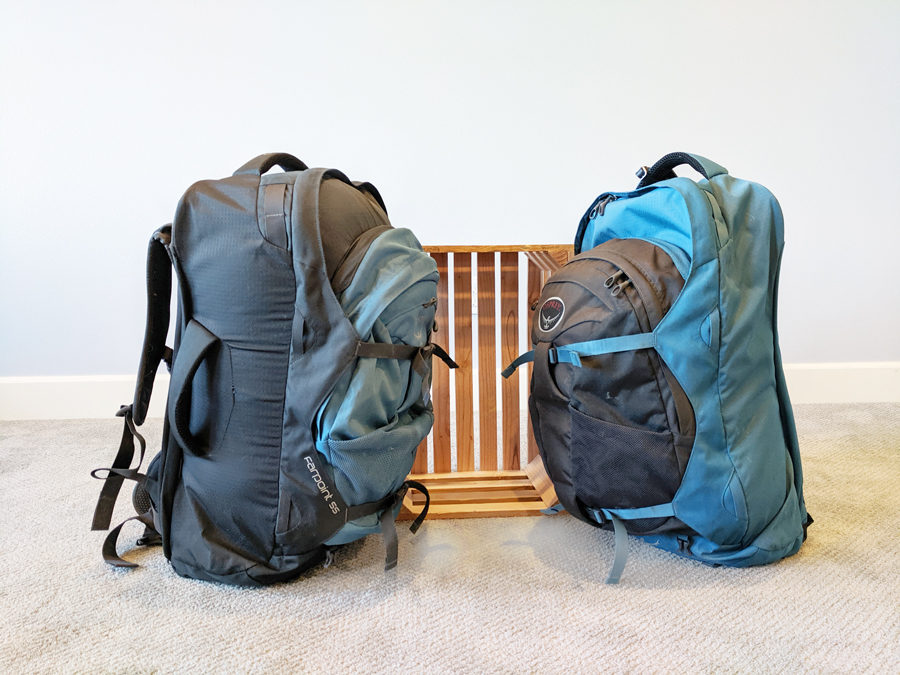
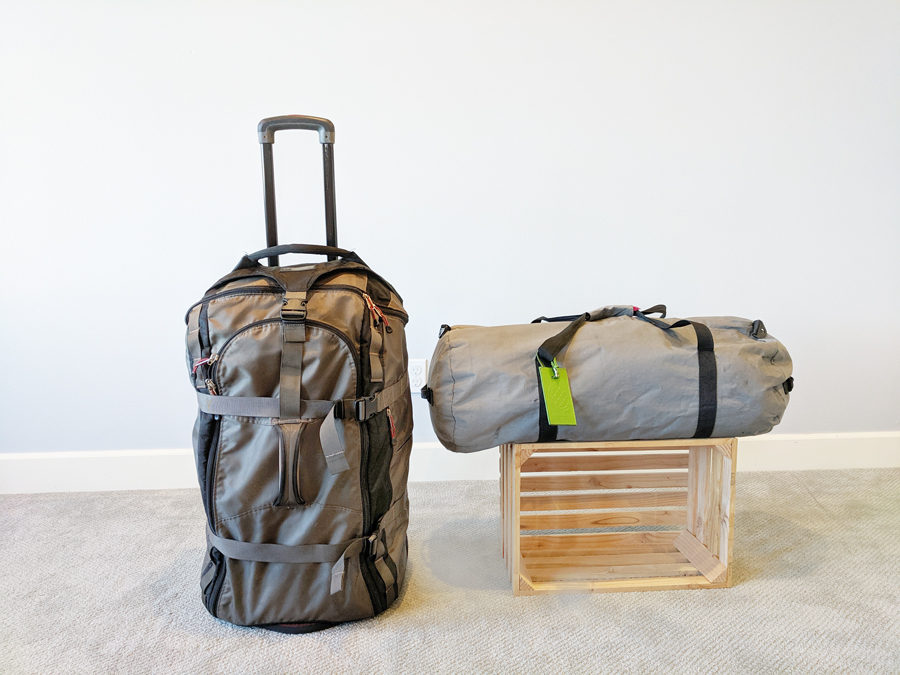
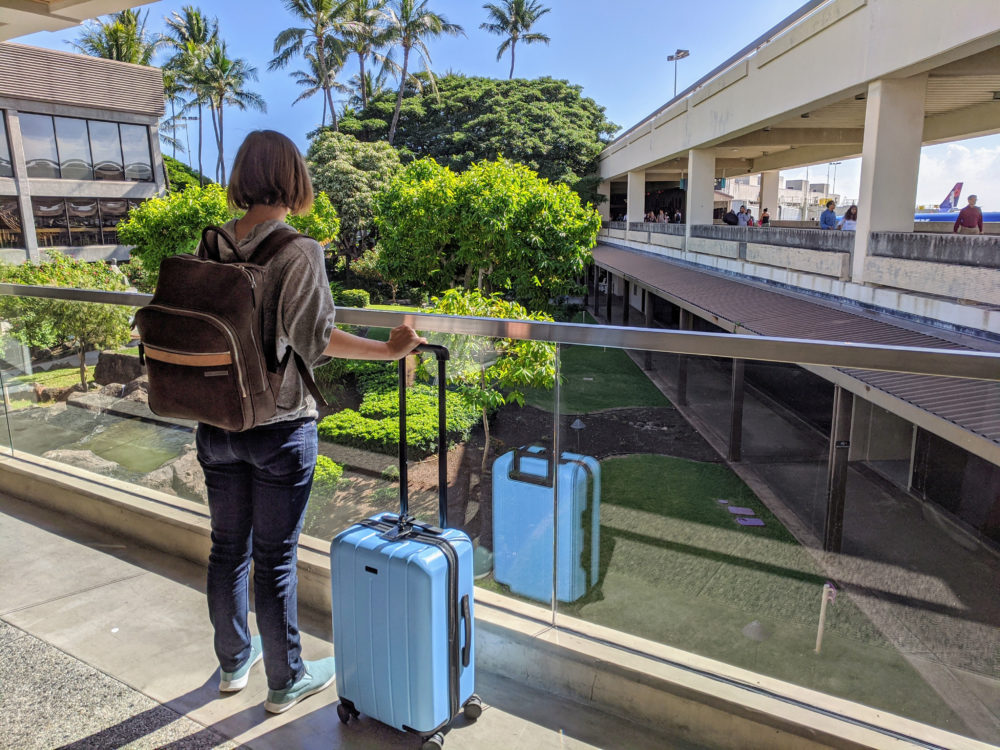
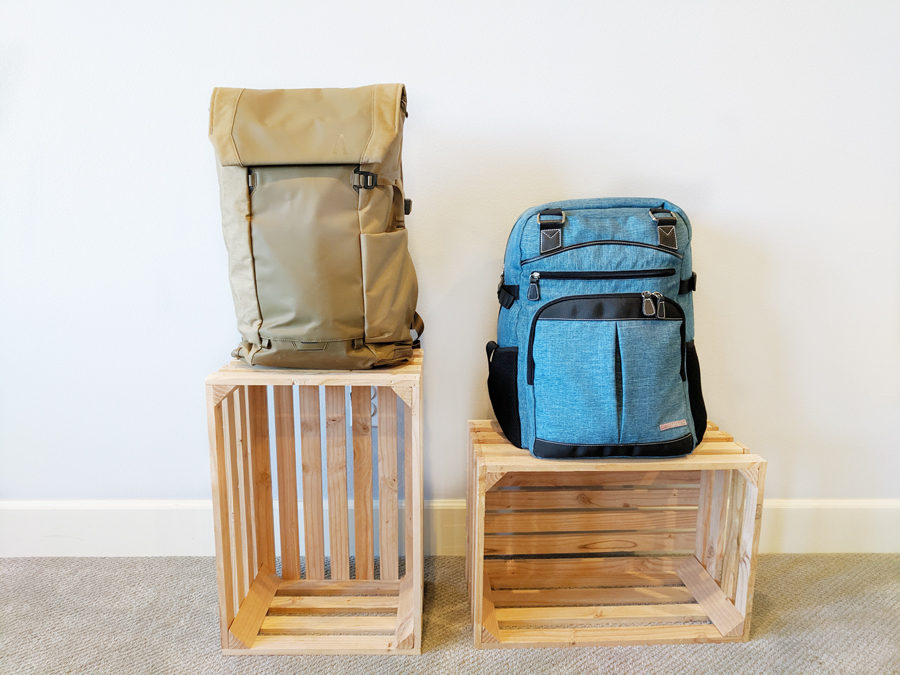
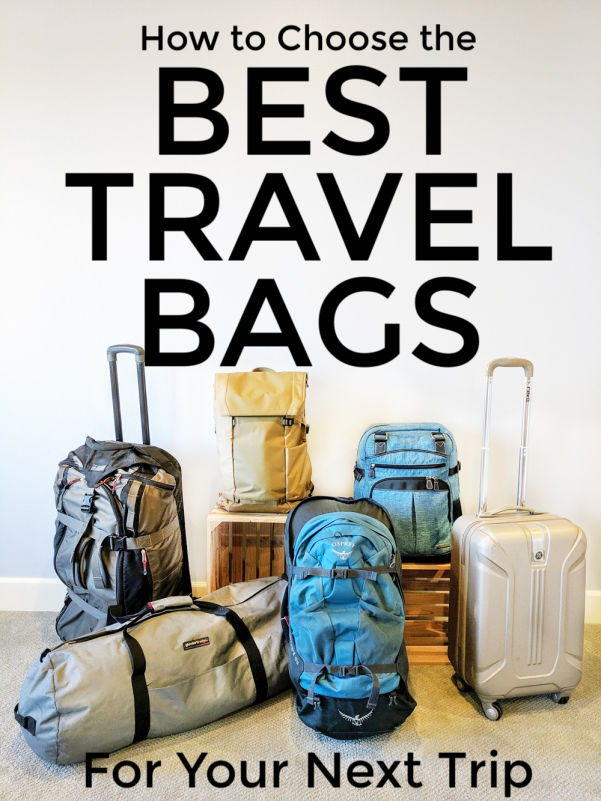
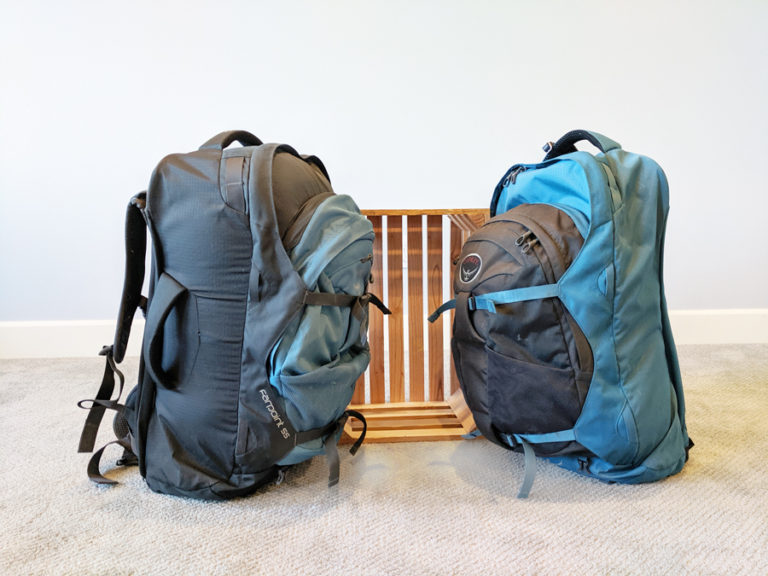




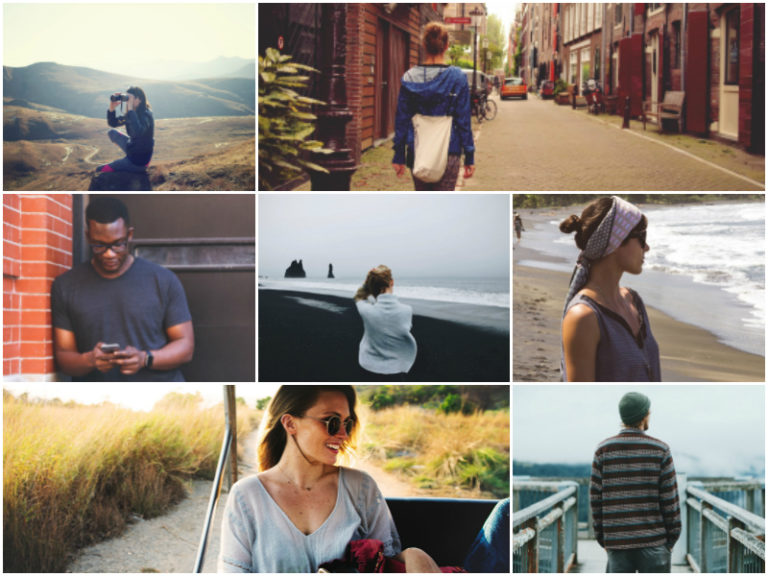
I’m not sure it’d be great for travel, but I absolutely love my Buffalo Jackson messenger bag for carrying my laptop on a daily basis. It’s a classic leather messenger that is very high quality and yet at what is a pretty reasonable price. I’ve had it going on three years and it ages perfectly as any leather bag should.
Sounds like a good bag – thanks for weighing in!